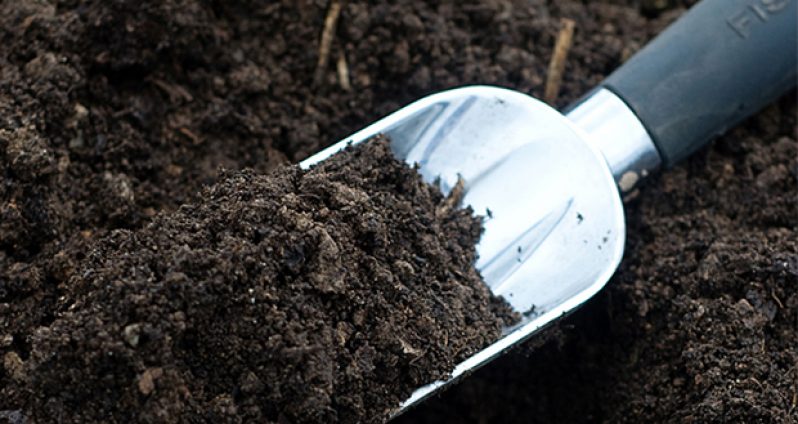The key to a productive and healthy garden is the preparation of the growing beds.
But you have to dig deep.
The goal of a deep dug garden bed is to produce a “living sponge-cake” in the soil, to a depth of 24 inches, with 50% pore space for air and water – optimally half of the pore space for each.
The other 50% of the soil, being mineral matter, including rock fragments and a small amount of organic matter.
A well-prepared bed with loose soil to a depth of 24 inches allows the roots of the plants to grow evenly and to provide a steady supply of nutrients to the rest of the plant.
Water is able to move through the soil freely, and weeds are easy to pull out.
The plant roots have so much loose soil to grow into that more plants grow in an even area, and this means more food from a smaller garden.
Water penetration is improved because of the greater amount of pore space and looseness of the bed.
As you irrigate or as it rains, water soaks easily and quickly into the soil. The deeply aerated soil acts as a sponge, absorbing water quickly.
This is important for a variety of reasons.
It allows a better use of rainfall. On more compacted soils, there is less water absorption capacity of the soil, so in heavy rains especially, water begins to run off and is wasted for agricultural purposes.
The deep dug bed will make a better use of rainfall, establishing a greater reserve of water for drier periods.
Finally, soil erosion becomes less of a problem as there is less water run-off and not as much valuable topsoil carried within it.
In a new garden, the sponge-cake may turn out to be only 15 or 18 inches, deep, but the microorganisms, the worms, the plant roots and water will usually cause it to become a little deeper each year.
So we see that a deep dug bed is a method of growing vegetables more intensively meaning more crop yield from a smaller space.
Growing in this way we can get 4 -6 times the yield we get from growing vegetables through more conventional methods.
This method is labor intensive rather than relying on mechanised animal labour.
It primarily relies on human labour.
A single well dug bed requires a high input of labour.
Digging one bed can take up to 8 hours.
In doing so, however, you are creating a permanently improved soil.
With proper care the labour requirements of the deep dug bed becomes less and less through time.
The initial digging is really the hardest part, from there on it is easier to maintain. This is due to the improved structure and texture of the soil that deep digging brings about.
Healthier and more abundant crops result from this improvement of the soil.
Deep dug beds are most appropriate for the cultivation of vegetable crops. Such as onions, tomatoes, cabbage, greens etc.
(Courtesy Gardening Tips- To be continued)
(By Clifford Stanley)




.png)









